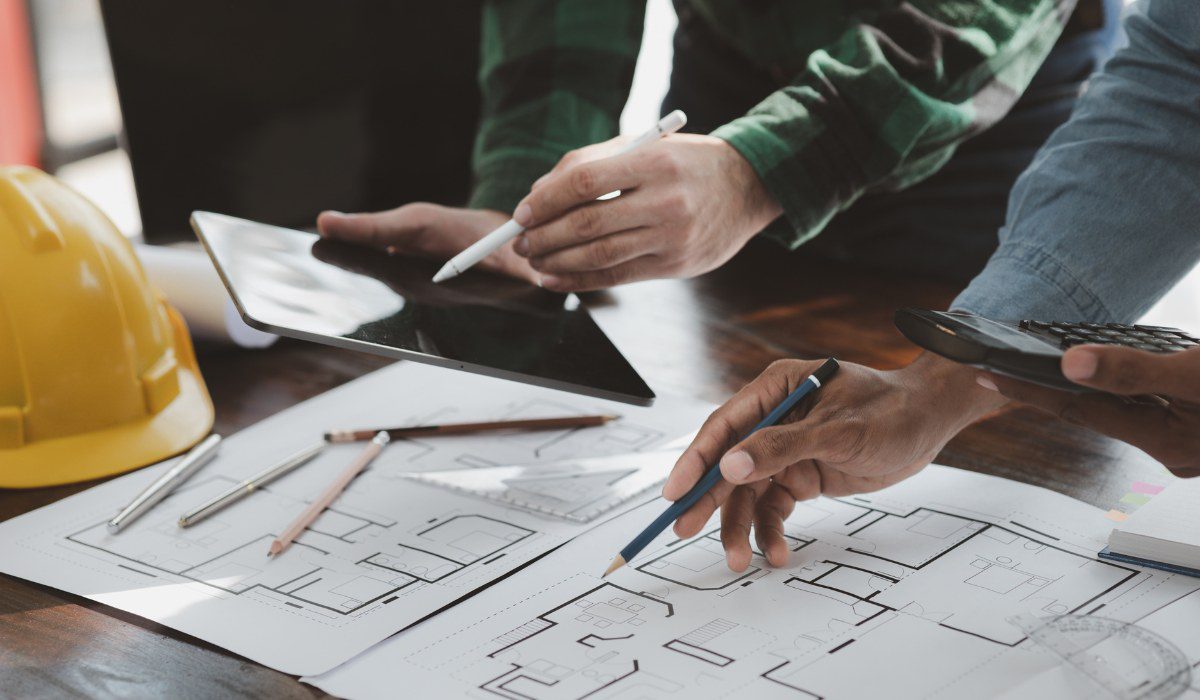While being highly rewarding, the decision to build a new home might seem daunting initially. Navigating through the planning and paperwork stages before the process begins can often seem complex and confusing. So to make things a tad bit simpler for you, we have curated a checklist of the aspects you must not overlook while building your new home. Here’s what you should consider during the planning process.
See also: Should you buy a home in a high-rise?
Budget planning
A detailed cost breakdown that covers all aspects of the project is key. Keep in mind to include aspects like land purchase, construction costs, permits, fees, landscaping and interior finishing. Alongside this fixed budget, allocate a separate contingency fund for unexpected expenses like design changes, material price increases or unforeseen construction problems. This should typically be 10 – 20% of the total budget. Most importantly, do not leave financing for the last moment. Factor in mortgage pre-approval, construction loans and insurance costs in time and make sure they align with your budget.
Location
For your own convenience, it is recommended that you evaluate the community and amenities in the neighbourhood. Proximity to healthcare services, public transportation, schools, shopping centres, parks and recreational facilities are always helpful. Not only the existing facilities, you should also take into account the future development plans in the area as they can significantly impact property value and quality of life. Studying the recent property trends and market conditions in the area can help assess the resale value potential of your property.
Design and layout
Opt for a functional design that meets your current needs as well as allowing potential for future growth and work with architects and designers to execute it in the best possible manner. For maximum functionality and comfort, prioritise optimising room placement and traffic flow and natural lighting, ventilation and energy efficiency. Strike the perfect balance between practicality and aesthetics by customising your home in a way that best reflects your personal style and preferences.
Permits and regulations
Ensure compliance with local building codes and zoning regulations by researching them in time. Make sure to obtain all necessary permits before the construction commences to avoid unforeseen delays and fines. Also keep in mind environmental regulations and restrictions and go for eco-friendly building practices, water conservation measures and landscaping guidelines.
Material quality
While selecting materials, make sure to balance cost, durability and aesthetics. Thoroughly research all available options for roofing, siding, insulation, windows and flooring keeping in mind the climate conditions of your region and maintenance requirements. Energy-efficient appliances, HVAC systems and insulation can help reduce long-term operational costs and environmental impact.
Builder selection
While choosing a builder, seeking recommendations from trusted sources and reviewing builders’ portfolios and client testimonials is the most reliable method. Double check the licence, insurance and bonds of the builder and check their professional affiliations and certifications. Once the talks with the chosen builder are through, thoroughly review the construction contract, especially the payment schedules, timelines, warranties and grievance redressal procedures.
Timeline and scheduling
Divide the entire project into phases and draw a detailed timeline outlining each phase in detail, from site preparation to final inspections. Plan for contingencies by anticipating potential delays due to the weather, supply chain disruptions or unexpected construction challenges. Keep your schedule flexible enough to accommodate all these issues.
Utilities and infrastructure
Utility planning is necessary to ensure timely installation of water, electricity, gas and sewage connections. Take care of these by coordinating with utility providers in time. Discuss your infrastructure needs with the builder to ensure adequate planning for driveway access, parking areas and other news like landscaping, fencing or outdoor lighting.
Future maintenance
While choosing construction materials, prioritise low-maintenance and resistance to wear and tear to ensure longevity. Prolong the lifespan and ensure efficient operation of systems and components such as HVAC, plumbing and roofing by developing a maintenance schedule.
Flexibility and adaptability
Address any changes or concerns with the construction plan promptly by maintaining open communication with your builder and project team. Keep space to accommodate unexpected challenges or design modifications and have a flexible construction process. Regular inspections and quality checks are necessary to ensure that the ongoing construction meets your standards and specifications.
FAQs
What should be my primary consideration when building a new home?
Start by drawing up a clear budget and timeline that takes into account your financial capabilities and accommodates contingencies, and provides a practical plan.
How do I choose the right location for my new home?
Proximity to schools, healthcare, amenities, recreation and future development plans in the area are some factors to consider.
What are the key steps in designing a new home?
Decide on a functional and efficient floor plan that meets your current needs and allows for future growth with an architect or designer. Optimise space and flow and consider energy efficiency and environmental impact.
What permits and regulations should I be aware of?
Local building codes, zoning laws and permit requirements must be researched and acquired early in the planning process for optimal compliance.
How do I ensure quality construction and materials?
Choose a reputable builder with a proven track record and select materials that balance durability, aesthetic appeal and long-term maintenance considerations.
What should I include in my construction timeline and scheduling?
Outline each phase of construction in detail and plan for potential delays due to weather, material availability and unforeseen challenges.
How do I plan for future maintenance of my new home?
Go for low-maintenance materials and develop a maintenance schedule for essential components and systems.
| Got any questions or point of view on our article? We would love to hear from you. Write to our Editor-in-Chief Jhumur Ghosh at jhumur.ghosh1@housing.com |







